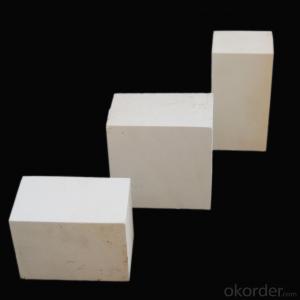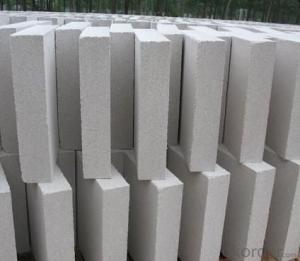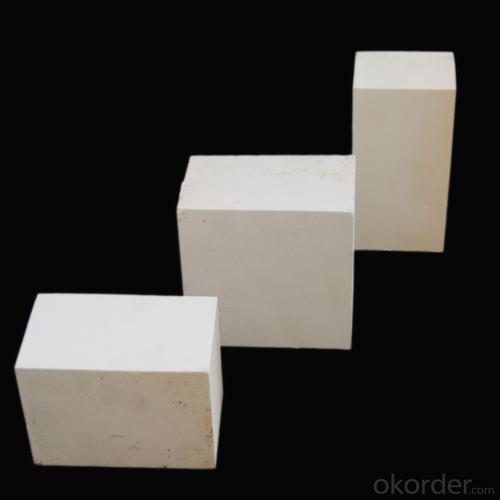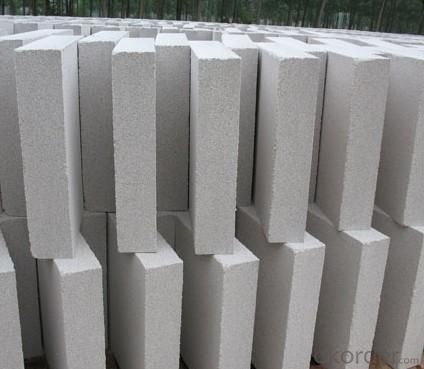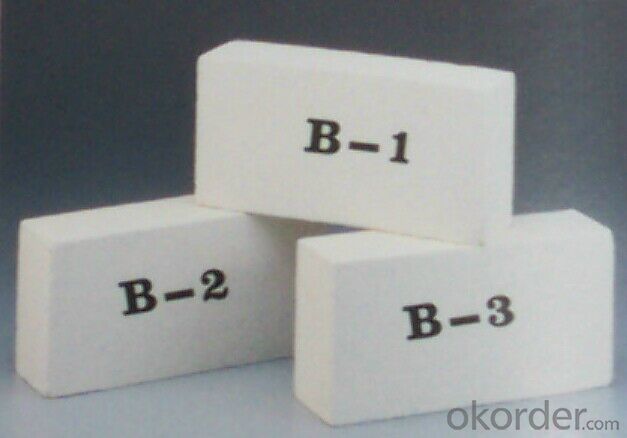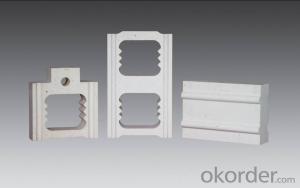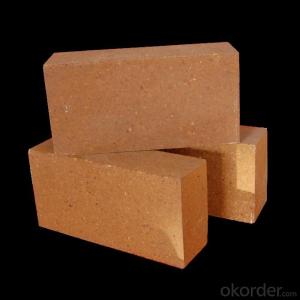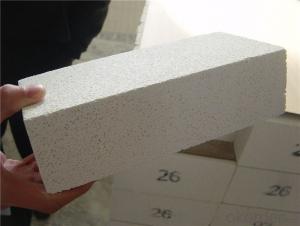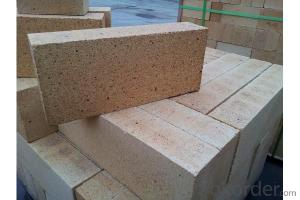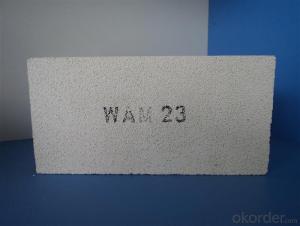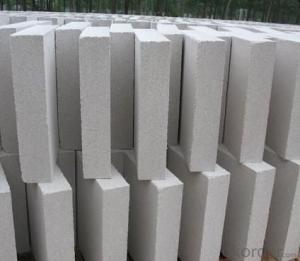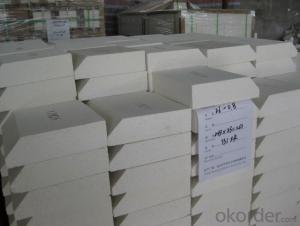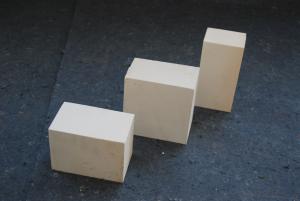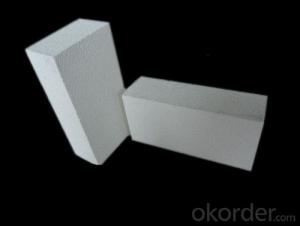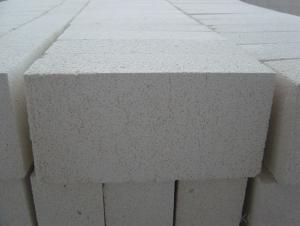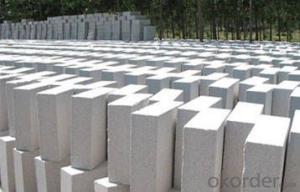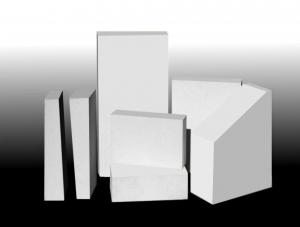Insulating Fire Brick - Refractory JM Mullite Insulation Brick B-7
- Loading Port:
- Shanghai
- Payment Terms:
- TT OR LC
- Min Order Qty:
- 10 m.t.
- Supply Capability:
- 1000 m.t./month
OKorder Service Pledge
OKorder Financial Service
You Might Also Like
Refractory mullite insulating refractory brick JM 23
Okorder series heat insulation brick
Okorder series thermal insulation brick is an effective, energy saving, low carbon, environmental protection advanced, according to the ASTM standard manufacturing products. Okorder series products are best Li Ning and insulation in all types of industrial furnaces in the metallurgical field, aluminum, petrochemical, electric power and glass ceramic materials. They can be used as part of the working layer of thermal insulation or non - melting. Products have been widely used in the following furnace, achieved satisfactory results.
Application of heat preservation brick
Metallurgical Industry: blast furnace, hot blast furnace, heating furnace, etc..
Petrochemical Industry: ethylene cracking furnace, hydrogen production furnace, primary reformer, heating furnace, etc..
Ceramic industry: roller kiln, kiln, etc..
Glass industry: glass furnace regenerator, etc.
Carbon industry: carbon furnace, etc..
Aluminum electrolysis industry: aluminum reduction cell, etc.
Other industries: tunnel kiln, shuttle kiln, etc..
Advantages of heat insulation brick
Low thermal conductivity: more porosity will bring good thermal insulation effect, energy saving.
High crushing strength: high crushing strength, volume stability.
Low heat storage: small heat storage to absorb more heat, energy-saving effect is obvious.
Gao Chundu: iron, alkali metal impurity content is low.
The precise size: Brick size processing precision, special shape cutting and grinding, accelerate the brickwork.
Insulating brick picture
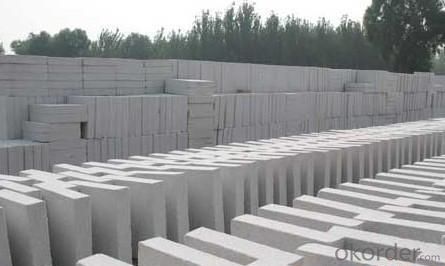

Common problem solutions
1. What products do you have?
We have all kinds of refractory bricks, refractory casting materials, mortar, cement, ceramic fiber products, etc..
Or you can browse our products to choose what you need.
2. How to control product quality?
With strict quality control system throughout the material selection and production process, we have the quality of refractory materials and ceramic fiber products to meet customer requirements.
From the selection of raw materials, the quality of our control to start. The quality certificate of the raw material is required, each batch of the products are to be tested in the use of the forward line. In the production process, the quality control by the workers, and then each piece of classification, and through the quality supervision and inspection.
3. Can you give me a brief introduction to the application of your product?
My company is mainly engaged in refractories in the steel, cement, glass, ceramics, petrochemical, electric power and other industries.
4. What information do you need if I need you?
In order to select the right products, we will provide us with information, such as the United States, technical data, order quantity, product application, etc..
If you have any questions, please contact us.
- Q: Can insulating fire bricks be used in refractory linings for boilers?
- Yes, insulating fire bricks can be used in refractory linings for boilers. These bricks have high insulating properties and can withstand high temperatures, making them suitable for use in boiler linings to reduce heat loss and improve energy efficiency.
- Q: How do insulating fire bricks help to conserve energy?
- Insulating fire bricks contribute to energy conservation in several ways. Firstly, these bricks are crafted from materials with high thermal resistance, enabling them to effectively impede heat transfer. When utilized in the construction of furnaces, kilns, or other heat-generating equipment, they create a protective barrier that prevents heat loss to the surroundings. Consequently, this diminishes the amount of energy required to maintain a consistent temperature within the equipment. Furthermore, insulating fire bricks possess low thermal conductivity, meaning they do not readily conduct heat. Consequently, they impede the transfer of heat from the hot side to the cold side, resulting in minimal heat loss and ensuring that more energy is utilized for its intended purpose, rather than being squandered. Moreover, insulating fire bricks possess a high heat capacity, allowing them to efficiently absorb and retain heat. This characteristic proves advantageous as it aids in stabilizing temperature fluctuations by gradually releasing stored heat over time. Consequently, this reduces the necessity for constant energy input to maintain the desired temperature. To summarize, insulating fire bricks aid in energy conservation by reducing heat loss, minimizing heat transfer, and stabilizing temperature fluctuations. By incorporating these bricks into various heat-generating applications, energy consumption can be significantly decreased, leading to cost savings and a more sustainable utilization of resources.
- Q: Can insulating fire bricks be used in the construction of metal smelting molds?
- Yes, insulating fire bricks can be used in the construction of metal smelting molds. Insulating fire bricks are designed to withstand high temperatures, making them suitable for use in smelting processes where extreme heat is required. These bricks have excellent thermal insulation properties, which help to retain the heat and minimize heat loss during the smelting process. This is important for maintaining a consistent temperature within the mold, ensuring efficient and successful metal smelting. Additionally, insulating fire bricks are lightweight and easy to handle, making them a practical choice for constructing molds. Overall, insulating fire bricks are a reliable and effective option for constructing metal smelting molds.
- Q: Can insulating fire bricks be used in the construction of flue gas ducts?
- Yes, insulating fire bricks can be used in the construction of flue gas ducts. Insulating fire bricks are specifically designed to withstand high temperatures and provide excellent thermal insulation. This makes them a suitable choice for lining flue gas ducts, as they can help to reduce heat loss and improve energy efficiency. Additionally, insulating fire bricks are resistant to chemical corrosion and can withstand the corrosive effects of flue gases. However, it is important to ensure that the insulating fire bricks used are specifically designed for flue gas duct applications and meet the necessary safety and regulatory requirements. Consulting with a professional engineer or specialist in the field is recommended to ensure the correct selection and installation of insulating fire bricks in flue gas ducts.
- Q: Can insulating fire bricks be used in the construction of furnaces?
- Insulating fire bricks are indeed suitable for the construction of furnaces. These bricks possess exceptional insulation qualities, enabling them to endure high temperatures without significant heat loss. Their composition primarily consists of lightweight materials like clay, silica, and alumina. Consequently, they exhibit low thermal conductivity, allowing the furnace to retain heat efficiently while preventing excessive heating of its outer surface. As a result, these bricks are ideal for lining the walls, roof, and floor of furnaces, contributing to enhanced energy efficiency and reduced fuel consumption. Moreover, their resistance to thermal shock ensures their durability and longevity in the demanding conditions of a furnace. In conclusion, considering their exceptional insulation properties and capacity to withstand high temperatures, insulating fire bricks remain a preferred option for furnace construction.
- Q: Can insulating fire bricks be used for insulation in flues?
- Insulating fire bricks are specifically designed for high-temperature applications and are commonly used in furnaces, kilns, and other industrial settings. While they are excellent for insulating heat and preventing heat loss in these environments, they are not recommended for use in flues. Flues are subjected to extreme temperatures, corrosive gases, and the potential for soot and creosote buildup. Insulating fire bricks are not designed to withstand these conditions and may deteriorate or crack over time when exposed to the acidic and corrosive gases produced by combustion. For insulation in flues, it is best to use materials that are specifically made for this purpose, such as refractory cement or ceramic fiber insulation. These materials are more resistant to the harsh conditions found in flues and are better suited to provide effective insulation while ensuring the safety and durability of the flue system.
- Q: Do insulating fire bricks require any special installation techniques?
- Yes, insulating fire bricks do require special installation techniques. These bricks are designed to provide excellent thermal insulation, which means they need to be installed properly to achieve optimal performance. Firstly, it is important to ensure that the installation surface is clean and free from any debris or moisture. This helps to create a strong and stable base for the bricks. Next, a suitable refractory mortar or adhesive should be used to secure the bricks in place. This mortar should be specifically designed for high-temperature applications and should be able to withstand the thermal expansion and contraction that occurs during heating and cooling cycles. During the installation process, it is crucial to pay attention to the joints between the bricks. These joints should be properly filled with mortar to prevent heat loss and maintain the insulating properties of the bricks. Additionally, insulating fire bricks should be carefully stacked and aligned to ensure a tight fit and minimize any gaps between the bricks. This helps to maximize the insulating effect and prevent heat leakage. Finally, it is recommended to consult the manufacturer's guidelines and follow their recommended installation techniques. Each type of insulating fire brick may have specific requirements that need to be followed for proper installation. Overall, insulating fire bricks do require special installation techniques to ensure their effectiveness and longevity. Following proper installation practices will help to enhance the thermal insulation properties of these bricks and optimize their performance.
- Q: Can insulating fire bricks be used in the construction of lime kilns?
- Yes, insulating fire bricks can be used in the construction of lime kilns. These bricks are specially designed to withstand high temperatures and provide excellent insulation, making them suitable for lining the interior of lime kilns. Their ability to retain heat and reduce heat loss can help enhance the efficiency and performance of the lime kiln.
- Q: Can insulating fire bricks be used as a backup insulation in refractory linings?
- Yes, insulating fire bricks can be used as a backup insulation in refractory linings. Insulating fire bricks are designed to have low thermal conductivity, which makes them effective in reducing heat transfer in high-temperature applications. Their insulating properties make them ideal for use as a backup insulation layer in refractory linings, helping to further reduce heat loss and improve overall energy efficiency. Additionally, insulating fire bricks are lightweight, which makes them easier to handle and install compared to other refractory materials. However, it is important to consider the specific requirements of the application and consult with a refractory engineer to ensure that insulating fire bricks are suitable for the specific conditions and performance requirements of the refractory lining.
- Q: Can insulating fire bricks be used in kilns?
- Indeed, kilns can utilize insulating fire bricks. These bricks are specifically engineered to endure extreme temperatures while offering exceptional insulation, rendering them highly suitable for kiln applications. Their low thermal conductivity plays a pivotal role in preserving the heat generated within the kiln, guaranteeing efficient and consistent heating. Furthermore, their lightweight nature facilitates effortless handling and installation in kilns. Moreover, they exhibit resistance to thermal shock, enabling them to withstand abrupt temperature fluctuations without succumbing to cracks or breakage. All in all, insulating fire bricks emerge as a dependable and efficient option for kiln usage.
Send your message to us
Insulating Fire Brick - Refractory JM Mullite Insulation Brick B-7
- Loading Port:
- Shanghai
- Payment Terms:
- TT OR LC
- Min Order Qty:
- 10 m.t.
- Supply Capability:
- 1000 m.t./month
OKorder Service Pledge
OKorder Financial Service
Similar products
Hot products
Hot Searches
Related keywords
